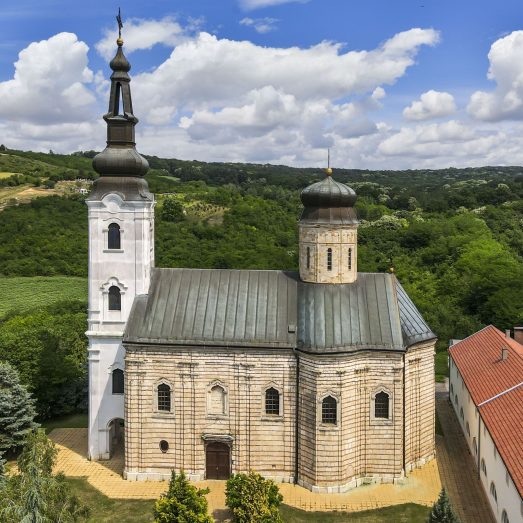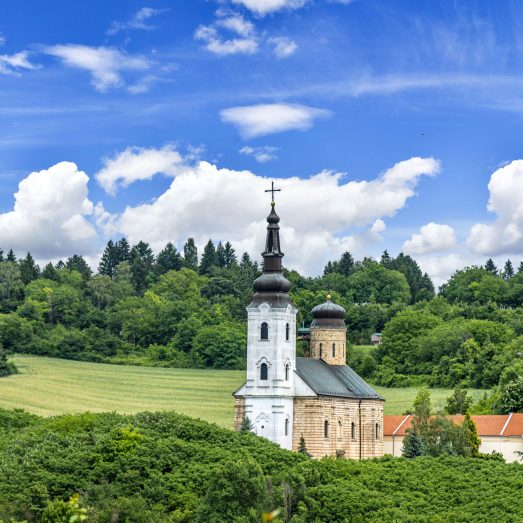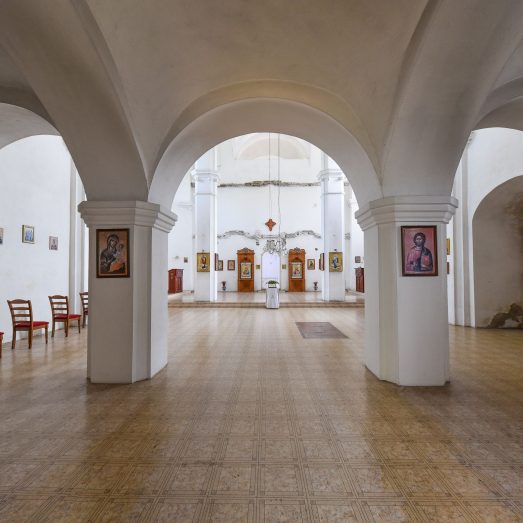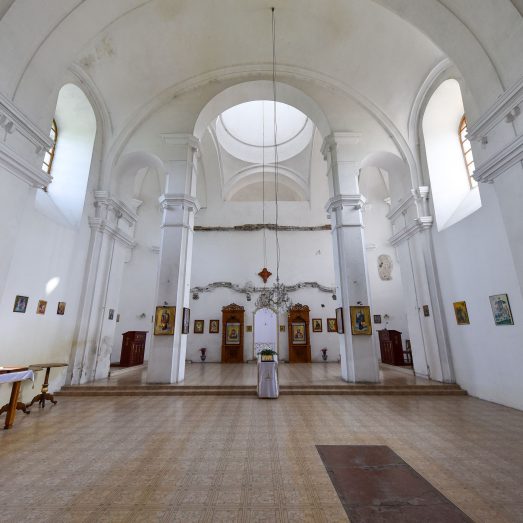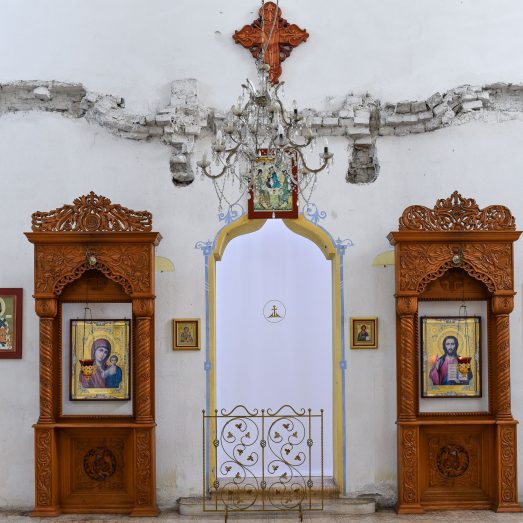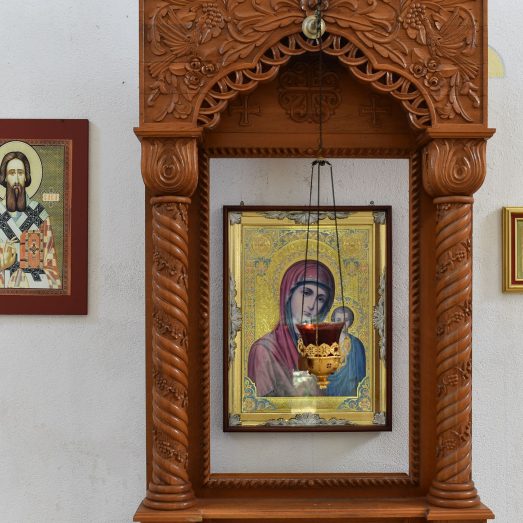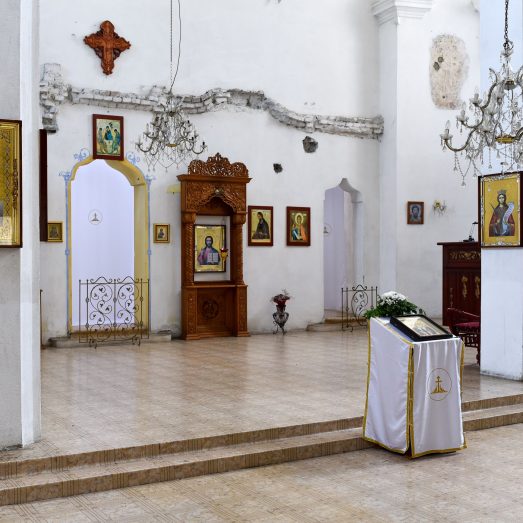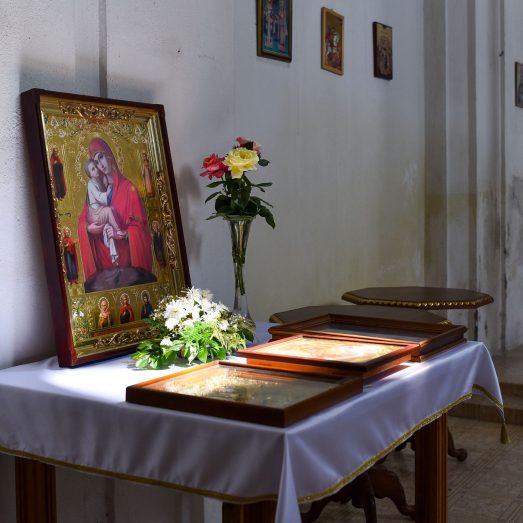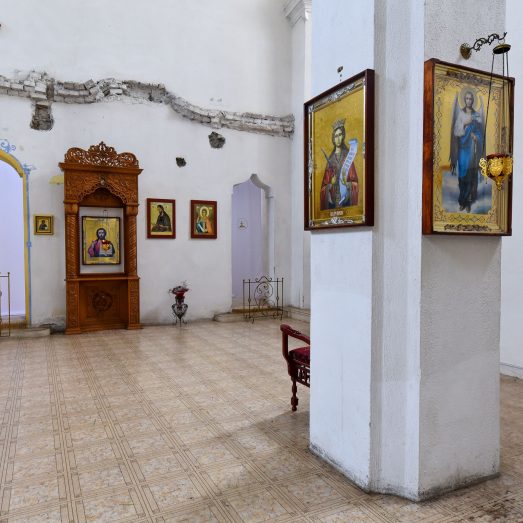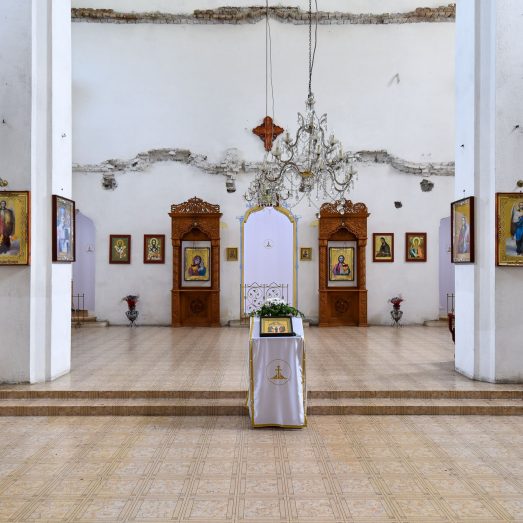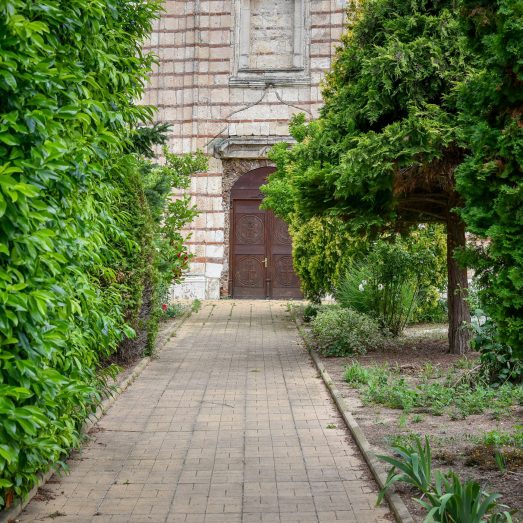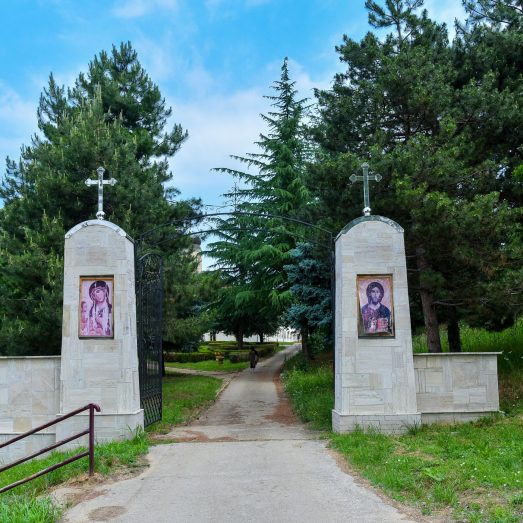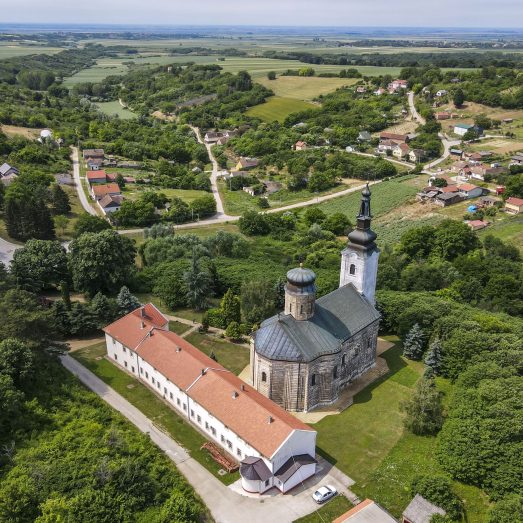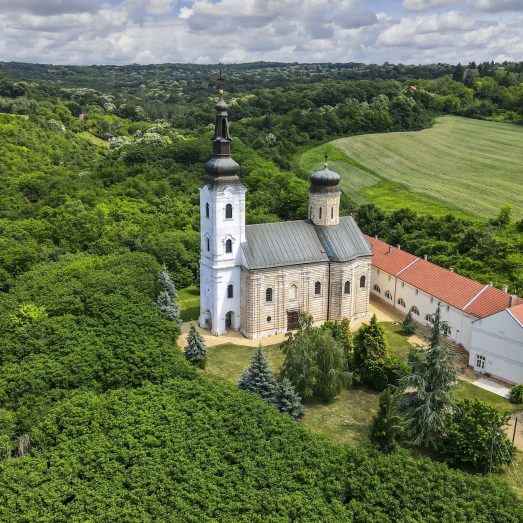The monastery church is dedicated to The Nativity of Mary (Mala Gospojina, 21 September)
According to the “Testamentary Scroll”(“Zaveštatelni svitak”), kept until the Second World War, it is known that, at the beginning of the 16th century, this monastery was built by the Hegumen of Žiča, Teofilo, with monks. At the place where there was a small Church of St. Nicholas (Sv. Nikola), known as Remetsko, they built a new one, dedicated to the Nativity of Mary, and named the monastery Šišatovac. In historical sources, the new monastery is also mentioned in a document from the first half of the 16th century, in which the Ottoman Turks allowed the monks to rebuild the monastic cells. In the first half of the 17th century, Patriarch Pajsije visited Šišatovac in order to write a biography of Serbian despot Stefan Štiljanović, whose relic has been in the monastery since the middle of the 16th century.
In the second half of the 18th century, an old stone temple was demolished and a monumental Baroque church was erected. The credit for its construction belongs to Bishop Vićentije Popovic of Vršac, and part of the credit for the renovation and construction of the entire monastery complex belongs to the brothers Monasterlije, the brothers Vitković and Captain Trifun Isaković. During the renovation, the graves of Jovan Monasterlije and Sekula Vitković were found in the church.
In the massive bell tower of the monastery church, from the middle of the 18th century, a chapel dedicated to St. George (Sv. Georgije) was built, a saint who was celebrated as a family patron saint by Vuk and Trifun Isaković. Chapel at the monastery cemetery dedicated to St. Peter and St. Paul was built in the middle of the 18th century thanks to Trifun Isaković. In the Second World War, the monastery was robbed, and the church and the konaks were blown up. Part of the looted treasure is today kept in the Museum of the Serbian Orthodox Church in Belgrade. The restoration of the monastery is still on-going.
The wall paintings and iconostasis of the monumental Baroque church, which still captivates with beauty, were painted by Grigorije Davidović Opšić at the end of the 18th century. Only parts of this iconostasis have been saved. There is an approved project of making an iconostasis identical to the one that existed before the Second World War, but we learned in the monastery that it is not known when it will be realized. During the Second World War, the original iconostasis of the chapel dedicated to St. Peter and St. Paul (whose imperial doors were painted by Dimitrije Bačević), and the new one was painted by Vukašin Govedarica. The painting from the dining room of the konak titled “Despot Stefan Štiljanović distributes grain to the people from his granaries in his city of Šikleuš” (“Despot Stefan Štiljanović deli žito narodu iz svojih žitnica u svom gradu Šikleušu”) the work of Arsa Teodorović from the beginning of the 19th century, is in the process of being returned to the monastery.
Since the middle of the 16th century, the relic of St. Stefan Štiljanović (? -1543) were kept in the monastery, and the monastery’s patron saint is on his day, October 17. The relic was saved from destruction because it was transferred to Belgrade in 1942, and now is in the Belgrade Cathedral. The process of returning the relic of St. Stefan Štiljanović is underway. The cult of this saint has been nurtured for centuries, especially during the time when the archimandrite was Lukijan Mušicki (1777–1837). The monastery kept valuable books and manuscripts, among which were “The History of St. Stefan Štiljanović” (”Povest Sv. Stefana Štiljanovića”) and the transcript of “Dušan’s Code” (“Dušanov zakonik”), known as “Šišatovac Manuscript” (“Šišatovački rukopis”). During Second World War, the Ustasha cruelly tortured monks and Hegumen of the monastery Rafailo (Momčilović), a trained painter, who died as a result of torture and beatings. He was canonized in 2000, and the monastery, on September 3, commemorates the day of St. Rafailo Šišatovački.
TOURIST INFORMATION: Visitors can visit the Church of the Nativity of Mary( Crkva rođenja Bogorodice). The appropriate way of dressing (for women covered head, long skirt, long sleeves, and for men long trousers and shirt) is implied. Smoking, alcohol and the pets are not allowed in the monastery complex. Group visits should be announced early via telephone +381 (0)22 266 35 30 (in the morning)
